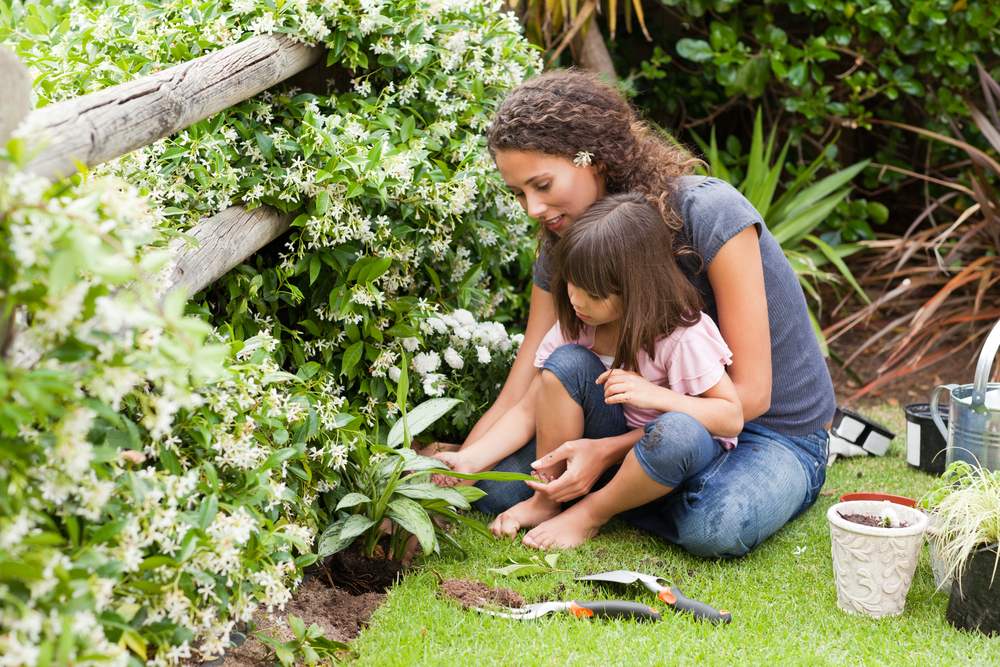
This week we will start to look at how plants and people grow. The two are more connected that you might think! (You can also jump to Week One here.)
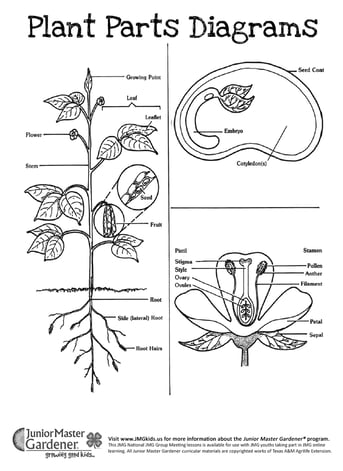
A plant has many different parts that work together just as a person’s body parts work together.
The plant roots, found in the soil, carry water and nutrients to the plant.
The stem supports and carries water and food throughout the plant. Leaves use sunlight to make food for the plant.
Flowers are usually the bright, colorful part of the plant; when they are pollinated by insects or wind, they produce seeds, which are sometimes stored in fruit.
A seed can make a new plant. Click here to view the Plant Parts Diagram in full. (From the Jr. MG Program)
Make a list of the vegetables you eat, can you identify which plants parts you eat of your three favorite vegetables? Is it the leaf, the root, a seed, the stem, the flower or flower bud, or the fruit?
What comes first the seed or the plant? This is a tricky question. You need a seed to grow a plant and then eventually the plant produces a seed. Hmm……plants, people, animals of many kinds and birds all depend on seeds as food or to grow.
When you think of the seeds we eat do you think of sunflower seeds or pumpkin seeds? That’s great! But did you know you probably eat more seeds than you realize?
Whole grains like rice, wheat and oats are also considered seeds! And guess what? Beans and legumes are seeds too. Do any of the seeds shown here surprise you?
Take a look at these slides to learn more about how grains and beans fuel your body.
Test your knowledge and learn some new facts about grains?
Try the grains quiz on My Plate https://www.choosemyplate.gov/quiz.
Join the National Jr. Master Gardener Program to learn about seed science:
You can do your own experiment by downloading the activity sheet here:
Green beans are another type of bean that you might enjoy eating. Oregon farmers grow a lot of green beans that typically get processed into canned or frozen beans. In 2018 Oregon farmers produced 143,800,000 pounds of green beans, valued at $23,596,000.
Check out this video from Oregon Agriculture in the Classroom to see how green beans are harvested:
Test your brain power with the crossword puzzle about wheat.
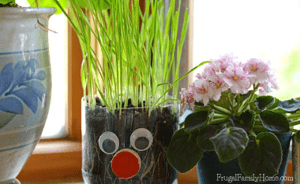
Just for Fun try growing a wheat grass Pet Pal.
Here are directions for how to grow your own wheatgrass pet pal!
DID YOU KNOW: Even though it's called "wheatgrass", there's no wheat in it, so it's completely gluten-free.
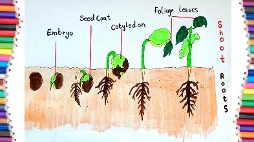 Use your Journal to record what you observe that is happening with your bean seeds.
Use your Journal to record what you observe that is happening with your bean seeds.
Here is an example of how it a seed might develop over a few weeks.
What are your favorite toppings to put on pancakes? Have you ever eaten pancakes made with cornmeal or even veggie pancakes? Would you rather have a pancake or a waffle?
Mark your calendar for Sep. 26 National Pancake Day!
Go on a Family Scavenger Hunt in your kitchen. Look in your cupboards or refrigerator to discover what foods you have on hand that are whole grains or are made from whole grains such as rice, oats, flour, corn, cereal or tortillas. How about beans? Do you have dried beans, lentils or canned beans on hand?
Together, decide which of your grains or beans you’d like to use in a recipe to make a meal or snack. Using the Food Hero ingredient search tool you can choose from a list of recipes that feature key ingredients to find something delicious that your family can try.
Cooking time for whole grains varies depending on the type of grain. The amount of water also varies for each type of grain. For most whole grains use the steaming method; bring water or broth to a boil, then stir in measured grain. Cover and reduce heat to low and simmer until tender.
Check out this helpful chart from the Whole Grain Council.
Your child can help by measuring the water and grain – make it a math activity…… if you need to make a double batch using 2 cups of grain how much water is needed?
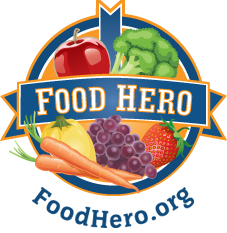 For tips for shopping, storage and cooking of these affordable and healthy foods check out Food Hero’s helpful documents:
For tips for shopping, storage and cooking of these affordable and healthy foods check out Food Hero’s helpful documents:
If you would like to share a photo of your digging gardening activities, seed sprouting, wheat grass pet pal or family recipe to the gallery page, ask a parent or adult for help and permission, then email your photo to: Erika.peterson@oregonstate.edu
